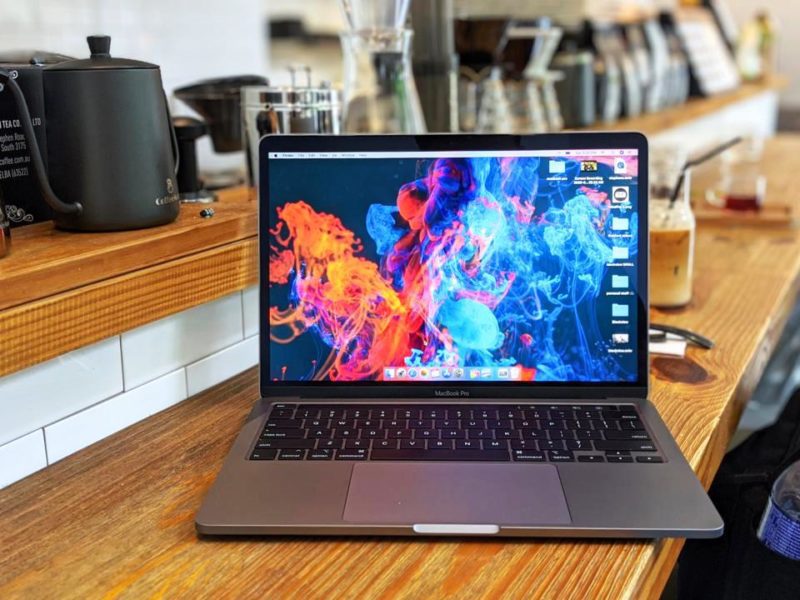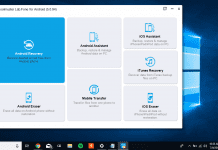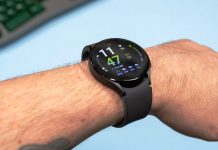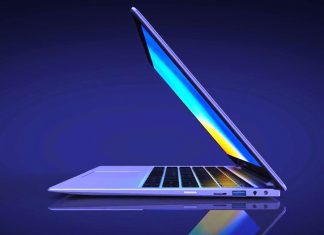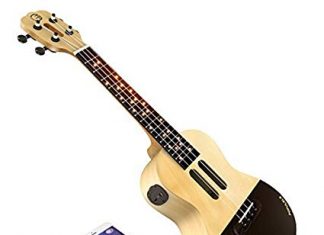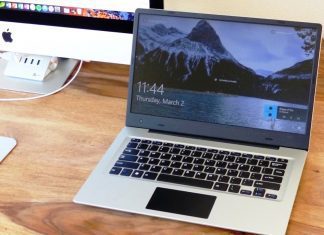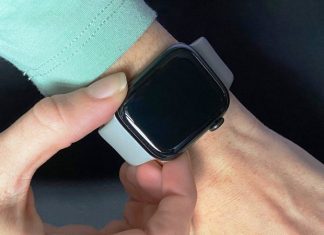The once-controversial laptops that Apple released a couple of years ago are now finally a thing of the past. The newest model of the infamous MacBook Pro will be the best version of Apple laptops so far with the new Magic Keyboard, Touch ID, a thin touch-enabled mini-screen forward of the keyboard called the Touch Bar, and many other upgrades and modifications.
The dimensions of the laptop are 0.61 by 12 by 8.4 inches (HWD) and 3.1 pounds with the Retina Display, a 13.3-inch panel with a very high native resolution, somewhere between full HD and 4K. It measures 2,560 by 1,600 pixels which is why colors appear brilliant, and text is sharp. The laptops also come with 720p webcams that offer only marginal video quality. The laptops also have excellent touchpads. The oversized glass surface uses haptic feedback to simulate clicks instead of a physical switch, that means the clicking sensation is adjustable in the System Preferences app, and the clicks will feel the same no matter where your finger happens to be on the touchpad.
The laptops come with an improved Intel Iris Plus graphics which is considered to be one of the most important upgrades. This is because Apple claims Final Cut exports will be 60 percent faster, for example. What’s surprising about the new model is how apps that don’t traditionally take advantage of new GPUs in Apple machines fared. Adobe Premiere exports haven’t matched the midrange 16-inch MacBook Pro tested last year, but they’ve outperformed a lot of expectations.
Two Models
In reality, there are two main versions of the 13-inch MacBook Pro. The first one comes with two USB-C Thunderbolt 3 ports which retails for $1,299. The second one featured four ports and that one is worth $1,799. And even though multiple ports can be very handy and comfortable you’ll still need adapters or special cables since all of the ports use the same oval-shaped USB-C connector, and with four of them, you might not need to buy an expensive docking station. But the number of ports isn’t the only difference between these two.
The entry-level configuration of the “base” model uses the same 8th Generation Intel Core i5 or Core i7 processors that powered the previous 2019 version of the 13-inch MacBook Pro. Meanwhile, the more expensive model features an improved 10th Generation “Ice Lake” processor, available in either Core i5 or Core i7. In addition to a new CPU design, the 10th Generation chips also bring other benefits, like faster graphics processing and memory, which are unavailable on the entry-level MacBook Pro. And the 10th Gen Intel Core i5 processor seems to be a significant improvement with an upgrade in speed and performance across the board.
This particular upgrade was heavily praised by video makers, streamers and streaming services themselves. However, the most vocal supporter of this new development was surprisingly the casino industry.
As was soon found out, casinos were heavily relying on fast and unopposed transmission on their live games. For example, casino games like live roulette are often seen as a game of skill, when in reality it’s a game of chance. But the casinos still want to provide the best quality transmission to their customers and they want to make sure that all of them have access to this quality.
But no matter how much casinos may praise Apple for the new macbook, the real beneficiaries are the users.
Apple Said its Final Goodbye to the Butterfly Keyboard
The new 2020 13-inch MacBook Pro was the last Mac notebook waiting to be updated with the new Magic Keyboard, following the 16-inch MacBook Pro and the 2020 Macbook Air. The trouble with the previous Macbooks was at the time innovative butterfly keyboard which turned out to be so fragile that even a little bit of dust was enough to disable the key completely. And those faulty keys definitely eroded consumer trust and also sparked several class-action lawsuits against Apple. This later resulted in Apple offering free repairs to damaged butterfly keyboards, which wasn’t that big of a relief as it was more of a temporary fix rather than a permanent one.
But that will no longer be the case with the brand new product as well as the older version of MacBooks and Apple no longer sells any of its products featuring the butterfly keyboard. And the Magic Keyboard featured on the new laptops ditches the extremely shallow keys while also adding travel distance and stability in a bid to please people who use their laptops to type all day. The scissor-switch mechanism underneath the keys on the Magic Keyboard provides one millimeter of travel, a firm bounce, and a more resonant thunk than the butterfly keyboard.
Frequent users of the Escape key will appreciate that the new Magic Keyboard has reclaimed this vital key from the Touch Bar. There’s now a physical Escape key located to the left of the Touch Bar, instead of a virtual one built into the Touch Bar like on previous versions of the MacBook Pro.
The audio quality of the $1,799 MacBook Pro is generally better than that of the MacBook Air, as well. The stereo speakers offer excellent bass and plenty of volume for such a small laptop, and certainly more dimensional sound than the MacBook Air’s speakers offer. Two tweeters fire upward through grilles that flank the keyboard, while frequencies from the woofers emanate from vents on the bottom of the laptop. The $1,299 entry-level MacBook Pro is different in its audio arrangement. It lacks dedicated woofers and tweeters, instead featuring four full-range speakers that all fire through the keyboard-flanking grilles.

